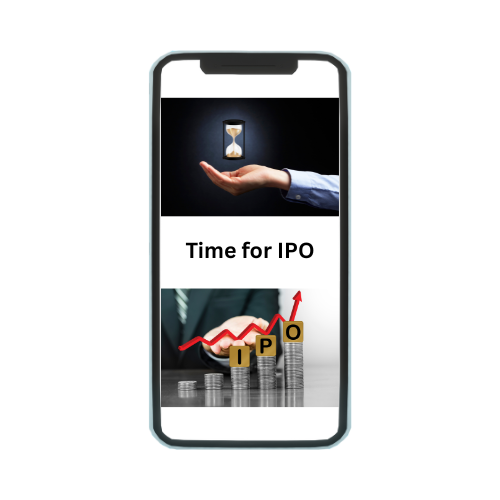What is Cost of Equity?
The cost of equity refers to the return a company expects to generate for its shareholders, which is necessary to attract investors to purchase or hold its shares. It represents the compensation investors require for taking on the risk of owning a company’s stock.
Components of Cost of Equity
The cost of equity represents the return that shareholders require for investing in a company’s stock, compensating them for the risk of owning equity. It is influenced by several components that are important to understand when calculating or estimating the cost of equity:
- Risk-Free Rate (R_f)
- The risk-free rate refers to the theoretical rate of return of an investment with zero risk, typically represented by the yield on government bonds.
- It forms the baseline return that investors would expect without taking any risk. In cost of equity calculations, it serves as the starting point for adjusting for the additional risk associated with equity investments.
- Market Risk Premium (R_m – R_f)
- The market risk premium represents the additional return that investors require for investing in the stock market over and above the risk-free rate.
- It compensates investors for bearing the systematic risk (market risk) inherent in equity investments, which cannot be diversified away.
- The market risk premium is typically derived from historical data or market expectations and reflects the overall risk tolerance of investors.
- Beta (β)
- Beta is a measure of a stock’s volatility or sensitivity to market movements compared to a benchmark index, usually the market as a whole (e.g., S&P 500).
- A beta greater than 1 indicates that the stock is more volatile than the market, while a beta less than 1 suggests lower volatility.
- Beta is used in the Capital Asset Pricing Model (CAPM) to adjust the risk-free rate by multiplying it with the market risk premium to calculate the cost of equity.
- Company-Specific Risk Premium
- Beyond market risk, companies may have unique risks that affect their cost of equity. These could include industry-specific risks, operational risks, financial risks, regulatory risks, etc.
- The company-specific risk premium adjusts the cost of equity to reflect these additional risks that are specific to the company and not captured by beta or the market risk premium.
- Dividend Growth Rate (g)
- For companies that pay dividends, the expected growth rate of dividends is an important component of the cost of equity calculation.
- Investors value stocks based on expected future dividends. A higher expected growth rate of dividends generally increases the attractiveness of the stock, lowering its cost of equity.
- The dividend growth rate can be estimated based on historical dividend growth, future earnings projections, or management guidance.
- Other Factors
- Size Premium: Smaller companies may have a higher cost of equity due to perceived higher risk or less liquidity compared to larger, more established firms.
- Liquidity Premium: Less liquid stocks may have a higher cost of equity to compensate investors for the difficulty of buying and selling shares.
- Country Risk: Companies operating in politically or economically unstable countries may have a higher cost of equity due to country-specific risks.
How is the Cost of Equity calculated?
The cost of equity represents the return that shareholders require for investing in a company’s stock, compensating them for the risk of owning equity. There are several methods to calculate the cost of equity, with the two most common approaches being the Capital Asset Pricing Model (CAPM) and the Dividend Growth Model (also known as the Gordon Growth Model).
1. Capital Asset Pricing Model (CAPM)
The CAPM formula for calculating the cost of equity is:
Cost of Equity (CAPM) =Rf+β×(Rm−Rf
Where:
- Rf is the risk-free rate, typically the yield on government bonds
- β is the beta coefficient of the stock, which measures its volatility relative to the overall market. It indicates how much the stock’s returns move in relation to the market.
- Rm is the expected return of the market, often represented by the expected return of a broad market index such as the S&P 500.
- (Rm−Rf) is the market risk premium, which compensates investors for taking on the additional risk of investing in the stock market over the risk-free rate
Steps to Calculate Cost of Equity using CAPM:
- Determine the Risk-Free Rate (Rf): Obtain the yield on government bonds with a maturity similar to the investment horizon of the stock. This represents the baseline return investors expect without taking on any risk.
- Calculate the Market Risk Premium (Rm− Rf): Estimate the expected return of the market (Rm) and subtract the risk-free rate (Rf). The market risk premium compensates investors for the systematic risk associated with investing in the stock market.
- Determine the Beta (β): Calculate or obtain the beta coefficient for the stock. Beta measures the stock’s volatility relative to the market. A beta greater than 1 indicates higher volatility compared to the market, while a beta less than 1 indicates lower volatility.
- Compute the Cost of Equity: Plug the values into the CAPM formula to calculate the cost of equity for the stock.
2. Dividend Growth Model (Gordon Growth Model)
The Gordon Growth Model formula for calculating the cost of equity is:
Cost of Equity (Gordon Growth Model)=D0×(1+g)/P0+g
Where:
- D0 is the current dividend per share.
- P0 is the current stock price.
- g is the expected dividend growth rate.
Steps to Calculate Cost of Equity using Gordon Growth Model:
- Determine the Current Dividend (D0): Obtain the latest annual dividend per share paid by the company.
- Estimate the Expected Dividend Growth Rate (g): Project the company’s future dividend growth rate based on historical growth, earnings forecasts, and management guidance.
- Calculate the Cost of Equity: Plug the values into the Gordon Growth Model formula to determine the cost of equity for the company’s stock.
Considerations:
- Reliability of Inputs: The accuracy of the cost of equity calculation depends on the reliability of inputs such as the risk-free rate, market risk premium, beta coefficient, current dividend, and expected growth rate.
- Contextual Factors: Different industries, company sizes, and economic conditions may influence the components of the cost of equity calculation.
- Investor Perspective: Investors may use different methods or adjust inputs based on their risk tolerance, investment horizon, and expectations for future market conditions.
Factors Influencing Cost of Equity
The cost of equity represents the return that investors require for holding a company’s stock, compensating them for the risk of owning equity. Several factors influence the cost of equity, reflecting the perceived risk and expected return associated with investing in a particular stock. Here are the key factors that influence the cost of equity:
1. Risk-Free Rate ( Rf)
- The risk-free rate is the return expected from a theoretically risk-free investment, such as government bonds.
- Influence: A higher risk-free rate generally leads to a higher cost of equity, as investors will demand a higher return from equity investments to compensate for the opportunity cost of investing in risk-free assets.
2. Market Risk Premium ( Rm−Rf )
- The market risk premium compensates investors for bearing the risk of investing in the broader market compared to risk-free assets.
- Influence: A higher market risk premium increases the cost of equity, reflecting higher perceived market risk and the additional return investors require for holding equity investments.
3. Beta ( β )
- Beta measures the volatility of a stock relative to the market. A beta greater than 1 indicates higher volatility compared to the market, while a beta less than 1 indicates lower volatility.
- Influence: Stocks with higher betas tend to have higher costs of equity because they are perceived as riskier investments. Investors require higher returns to compensate for the higher volatility and risk.
4. Company-Specific Risk
- This includes factors specific to the company that affect its risk profile, such as industry volatility, financial leverage, operational risks, management quality, and regulatory environment.
- Influence: Companies with higher levels of company-specific risk generally have higher costs of equity. Investors demand higher returns to compensate for the additional risk factors specific to the company.
5. Dividend Policy and Growth
- The dividend policy and growth rate influence the expected future cash flows and returns to shareholders.
- Influence: Companies with higher dividend yields or expected growth rates may have lower costs of equity. Investors may perceive these stocks as offering attractive returns through dividends or capital appreciation.
6. Economic and Market Conditions
- Macroeconomic factors, such as inflation rates, economic growth prospects, and interest rate environments, impact investor sentiment and risk perceptions.
- Influence: Economic downturns or uncertainties typically lead to higher costs of equity as investors demand higher returns to compensate for heightened economic and market risks.
7. Size and Liquidity of the Company
- Smaller companies or companies with lower liquidity may face higher costs of equity due to perceived higher risk and potential difficulties in trading their stocks.
- Influence: Larger, more liquid companies often have lower costs of equity because they are perceived as safer investments with greater market access and stability.
8. Investor Sentiment and Risk Aversion
- Investor sentiment and risk aversion influence the demand for stocks and the required returns.
- Influence: During periods of heightened risk aversion, investors may demand higher returns, leading to higher costs of equity. Positive market sentiment may reduce the cost of equity as investors accept lower returns.
Applications of Cost of Equity
The cost of equity is a critical concept in finance with several practical applications across various financial decisions and analyses. Here are some key applications of the cost of equity:
1. Capital Budgeting and Investment Decisions
- Evaluation of Projects: Companies use the cost of equity as a hurdle rate to assess the viability of potential investments or capital projects. Projects expected to generate returns higher than the cost of equity are generally considered acceptable investments.
- Resource Allocation: It helps in allocating resources to projects with the highest expected returns relative to their risk profile.
2. Valuation of Companies
- Discounted Cash Flow (DCF) Analysis: The cost of equity is used as the discount rate in DCF models to determine the present value of future cash flows attributed to equity holders. This valuation approach is fundamental in estimating the intrinsic value of a company’s stock.
- Comparable Company Analysis: In valuation methods based on multiples (such as Price-to-Earnings ratio), understanding the cost of equity helps in comparing companies with similar risk profiles.
3. Setting Dividend Policy
- Dividend Yield Considerations: Companies consider their cost of equity when setting dividend policies. If the cost of equity is high, management may prefer to retain earnings to reinvest in the company rather than paying out dividends.
- Balancing Shareholder Expectations: It helps in balancing the expectations of shareholders for dividend income against the company’s need for retained earnings to fund growth opportunities.
4. Determining Optimal Capital Structure
- Cost of Capital Calculations: The cost of equity is a component of the company’s overall cost of capital, which includes both equity and debt financing. Companies aim to minimize their weighted average cost of capital (WACC) by optimizing the mix of debt and equity that minimizes the overall cost of financing.
- Debt-Equity Decision: Understanding the cost of equity helps in deciding whether to raise capital through equity issuance or debt financing, balancing the benefits and risks associated with each.
5. Investor Relations and Communication
- Investor Expectations: Companies use the cost of equity to communicate their expected returns to investors. This helps in managing investor expectations and attracting equity investors who are aligned with the company’s financial goals and risk profile.
- Strategic Planning: It informs strategic decisions related to mergers and acquisitions, capital restructuring, and expansion plans by considering the cost of equity implications on shareholder value creation.
6. Risk Management and Financial Stability
- Risk Assessment: Assessing the cost of equity helps in identifying and managing risks that impact shareholder value. Companies with higher perceived risks (e.g., higher beta) may face higher costs of equity, prompting them to implement risk mitigation strategies.
- Financial Stability: Maintaining an appropriate cost of equity ensures financial stability by aligning investor expectations with the company’s ability to generate returns and manage risks effectively.
Limitations of Cost of Equity
While the cost of equity is a fundamental concept in finance, it also comes with several limitations and challenges that should be considered when using it for financial analysis and decision-making. Here are some key limitations of the cost of equity:
1. Sensitivity to Inputs
- Estimation Challenges: Calculating the cost of equity relies on several inputs such as the risk-free rate, market risk premium, and beta. Small changes in these inputs can significantly impact the calculated cost of equity, leading to potential variations in financial decisions and valuations.
- Subjectivity: Inputs such as beta and expected market returns are often estimated based on historical data or assumptions, introducing subjectivity and uncertainty into the cost of equity calculation.
2. Market and Economic Factors
- Market Volatility: Changes in market conditions, economic outlook, or investor sentiment can affect the cost of equity. During periods of market turmoil or economic uncertainty, investors may demand higher returns, increasing the cost of equity.
- Interest Rate Sensitivity: The cost of equity is influenced by the risk-free rate, which can fluctuate based on changes in monetary policy and economic indicators.
3. Company-Specific Factors
- Industry Dynamics: Different industries may have varying risk profiles and cost of equity considerations. High-risk industries, such as technology or biotechnology, may face higher costs of equity compared to stable sectors like utilities.
- Financial Health: Companies with weaker financial metrics or higher leverage may experience higher costs of equity due to perceived financial risk and potential for default.
4. Limitations in Valuation
- DCF Valuation: In discounted cash flow (DCF) analysis, the cost of equity is used as the discount rate to calculate the present value of future cash flows. However, DCF models rely on assumptions about future growth rates and cash flow projections, which can introduce uncertainty and affect valuation accuracy.
- Comparative Valuation: When using multiples (e.g., P/E ratio) for valuation, differences in cost of equity assumptions between comparable companies can lead to inconsistencies in valuation outcomes.
5. Investor Behavior and Expectations
- Market Perception: Investor perceptions of risk and return expectations can influence the cost of equity. Market sentiment and behavioural biases may lead to fluctuations in stock prices and cost of equity estimates that do not always reflect underlying fundamental factors.
- Dividend Policy: The cost of equity impacts dividend policy decisions, as companies may adjust dividend pay-outs based on their cost of equity and investor preferences for income versus capital appreciation.
6. Limited Scope
- Focus on Equity Financing: The cost of equity primarily applies to equity financing and does not directly incorporate costs associated with other forms of financing (e.g., debt financing). This can limit its applicability in comprehensive cost of capital analyses.
Mitigation Strategies
To address these limitations, financial analysts and decision-makers can:
- Use Sensitivity Analysis: Evaluate how changes in key inputs (e.g., risk-free rate, beta) impact the cost of equity and financial outcomes.
- Consider Range of Estimates: Incorporate a range of estimates for inputs to assess the potential range of cost of equity values.
- Use Multiple Valuation Methods: Combine DCF analysis with comparative valuation methods to cross-validate valuation outcomes.
- Monitor Market and Economic Trends: Stay informed about market and economic developments that may impact the cost of equity over time.
Conclusion
The cost of equity is a versatile financial metric that plays a crucial role in strategic decision-making, financial analysis, and investor relations. By understanding and applying the cost of equity appropriately, companies can optimize their capital structure, evaluate investment opportunities, and enhance shareholder value while effectively managing financial risks and investor expectations.





